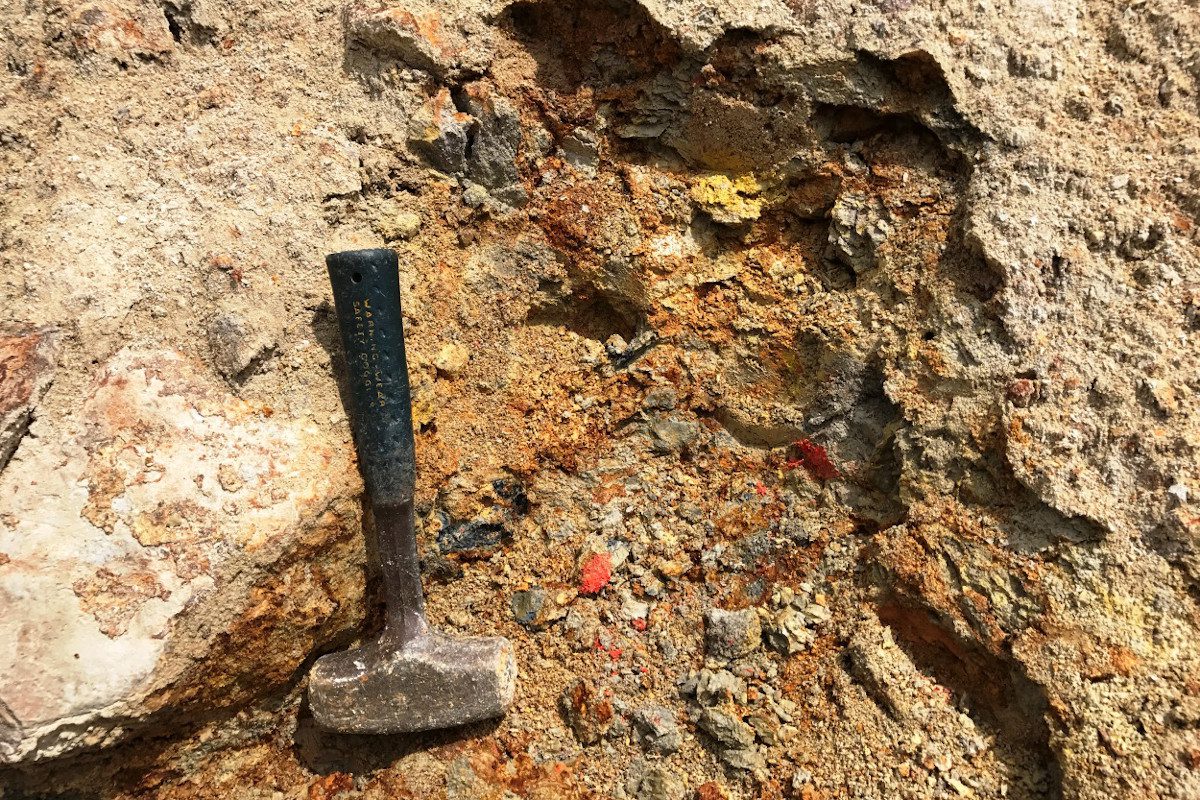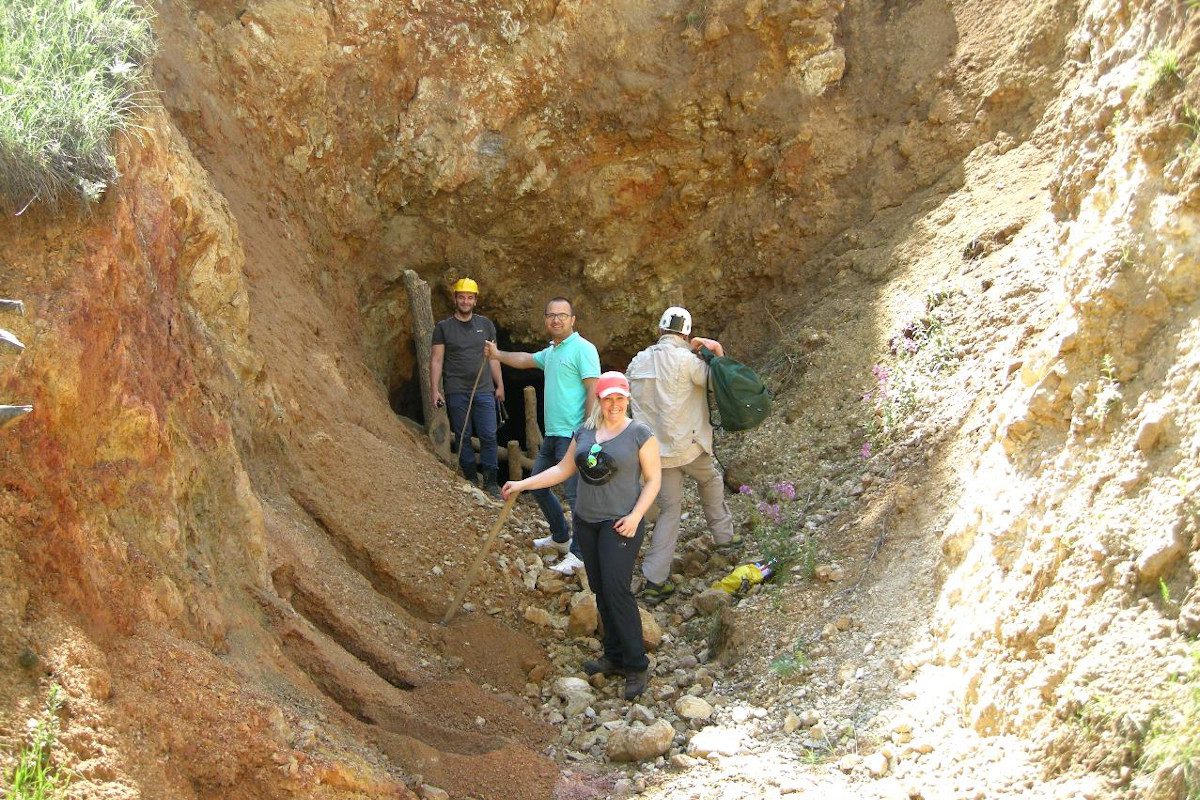In politically sensitive regions of the West Balkans, the mineralogist and crystallographer Tamara Đorđević has been investigating mining waste contaminated with arsenic and other toxins. In order to understand how these ticking time bombs affect the environment, she examines their crystal structure with cross-disciplinary expertise from crystallography and chemistry, as this article explains.
In 2014, Tamara Đorđević decided to abandon pure laboratory work and venture out into the field. After several years of successfully synthesising and examining crystals from arsenic salts, she was seeking a new challenge and began to apply her expertise to environmental problems related to mine tailings, especially in the territory of North Macedonia. In the context of a project funded by the Austrian Science Fund FWF, she investigated abandoned mines in that country containing highly toxic mining waste contaminated by arsenic, thallium and antimony. “In terms of volume, mining wastes are the largest amounts of wastes on our planet,” says principal investigator Đorđević. “North Macedonia is particularly contaminated because the mining waste there is particularly toxic and was simply left lying around. Although North Macedonia is a small country, it has many such mines.”
Đorđević stresses that mining waste is an underestimated problem. “Environmental disasters involving mining waste have repeatedly made the headlines in the past, such as in Romania in 2000 or in Brazil in 2015. Following such a disaster, extensive research is, of course, carried out on site,” notes the researcher. But interest usually wanes again after a while. Tamara Đorđević tries to understand the resultant risks above and beyond headline-making disasters. “What I do is geared to long-term evaluation and takes decades.” Đorđević emphasises that studies devoted to such latent threats are particularly important: “Only in this way can we understand what happens in detail, what these substances do when they are exposed to air, water or weathering.”
Sensitive region

Specifically, Đorđević is currently working on two disused mines in North Macedonia: “One is located near the border that separates the country from neighbouring Serbia and Kosovo, a very dangerous area in socio-political terms because a Macedonian and an Albanian village lie there.” That makes it difficult to get the necessary permits. “Because of the political tensions, no one there cares about this extreme contamination,” says Đorđević. Nothing is done to protect the spoil tips, where she also found the toxic element antimony. “The second deposit is near the border with Greece, in the south of the country. Here you find thallium and mercury on top of everything else. It is the most famous deposit in the world for thallium mineralogy, especially for a mineral called lorándite,” explains Đorđević.
Highly toxic substances
Both thallium, a metal, and antimony, a semi-metal, are highly toxic and lethal to humans even in small doses of about one gram, similar to better known arsenic. On the mining spoil tips these elements are present in various chemical compounds and different grain sizes. Đorđević employs the whole gamut of crystallographic methods to analyse the deposits from the macro to the nano scale in order to understand how they interact with the environment. Some of these methods involve X-rays, which can penetrate crystals and show specific patterns from which the structure of the material can be deduced. Conclusions about the material can also be drawn from electron radiation. In addition, Đorđević uses transmission electron microscopy, which is so precise that it can be used to image individual atoms.
“Scientific literature includes many environmental and geochemical publications that deal with the chemistry of these substances,” notes Đorđević, but she points out that it is important to know in which crystalline form a chemical element is present. “I want to understand the crystal structure and how it changes on site. For this purpose I have to study the original source.” To what extent these substances contaminate the environment depends on how they interact with air and water. Water presents the greatest danger as it washes the substances out of the spoil tips. According to Đorđević the two North Macedonian mines primarily serve as models: “We can use the results to understand how toxins spread, regardless of whether this takes place in China, Canada or elsewhere in the world.”

New form of thallium discovered
First results of the international project, which involves groups from Germany, the Czech Republic and North Macedonia as well as the Vienna Natural History Museum and the Vienna University of Technology, are promising. “We have discovered a new form of thallium,” reports Đorđević. “It’s a thallium salt we had not previously known because thallium is very soluble.” The project will run until 2021 and further publications are in the pipeline.
Đorđević already studied crystals of arsenic in her paper for her venia docendi in the context of the FWF’s Elise Richter Programme, but this was on a smaller scale in a laboratory. Environmental mineralogy is a new challenge, notes Đorđević. “Here I work in a larger team and look at the whole system. I have to tell a bigger story, like in a novel. And I find that more exciting,” says the mineralogist.







